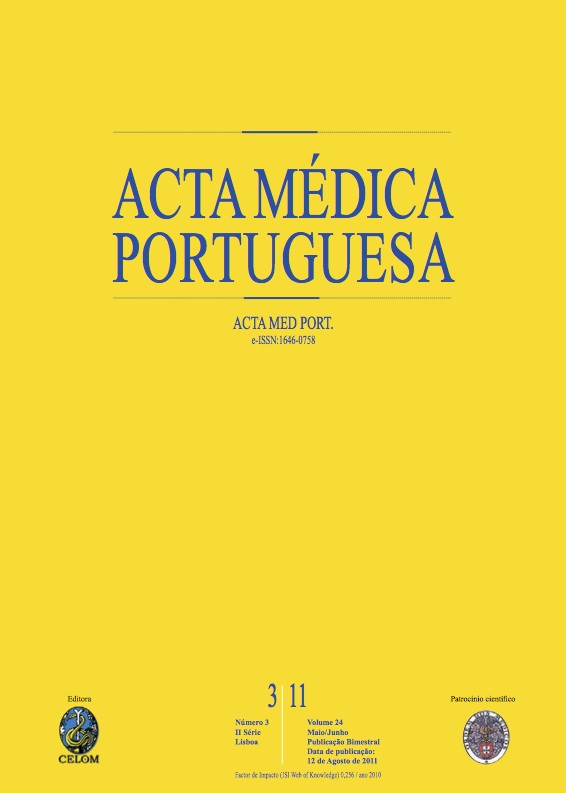Serratia osteomyelitis and chronic granulomatous disease.
DOI:
https://doi.org/10.20344/amp.459Abstract
Chronic Granulomatous Disease (CGD) is a primary immunodeficiency disorder characterized by recurrent purulent infections of the skin, lungs, and reticuloendothelial organs, primarily due to staphylococci, enteric bacteria, fungi, and occasionally mycobacteria. More than two thirds of all cases are X-linked and result from defects in the CYBB gene that encodes the gp91-phox subunit of NADPH oxidase. The authors present a case of a three month old child admitted with a metacarpic steomyelitis by Serratia marcescens. Studies confirmed an abnormal respiratory burst in activated neutrophils and absence of gp91-phox expression on patient and a brother (with previous Nocardia infection). Both hemizygous for a pathogenic mutation detected in exon 3 of CYBB gene (c.252 G>A, p.Ala84Ala), a variant that affects the splicing. At two years of age he is still on prophylaxis with cotrimoxazol and itraconazol, without relevant complications. CGD is rare but must be evocated in cases of uncommon or atypical infections.Downloads
Downloads
How to Cite
Issue
Section
License
All the articles published in the AMP are open access and comply with the requirements of funding agencies or academic institutions. The AMP is governed by the terms of the Creative Commons ‘Attribution – Non-Commercial Use - (CC-BY-NC)’ license, regarding the use by third parties.
It is the author’s responsibility to obtain approval for the reproduction of figures, tables, etc. from other publications.
Upon acceptance of an article for publication, the authors will be asked to complete the ICMJE “Copyright Liability and Copyright Sharing Statement “(http://www.actamedicaportuguesa.com/info/AMP-NormasPublicacao.pdf) and the “Declaration of Potential Conflicts of Interest” (http:// www.icmje.org/conflicts-of-interest). An e-mail will be sent to the corresponding author to acknowledge receipt of the manuscript.
After publication, the authors are authorised to make their articles available in repositories of their institutions of origin, as long as they always mention where they were published and according to the Creative Commons license.









